Spring Into Action 0
We are told that March 20th is the first day of spring. Can you smell the flowers yet? Our students in California, particularly the ones who have never experienced snow beyond Big Bear or Yosemite may not understand why we live in New England. For myself, I love the history of the region and the beauty each season offers. Experiencing the changing seasons is like living in four places without moving. There is always something to look forward to and seeing things with a fresh perspective.
Speaking of looking forward, many highs school seniors are waiting to hear from the colleges to which they applied. If they have followed the steps we have laid out for them, they will hopefully get the news they are hoping for and will decide by May 1 which college they will attend. But if they are put on the dreaded waitlist at their first choice colleges they will need to adjust and consider their options.
Meanwhile, current juniors and sophomores should be looking at the steps they need to be taking if they too have college aspirations. One is to take advantage of college visits while students are still on campus and attending college fairs that will be at cities around the country starting in May and continuing through the fall of the year. 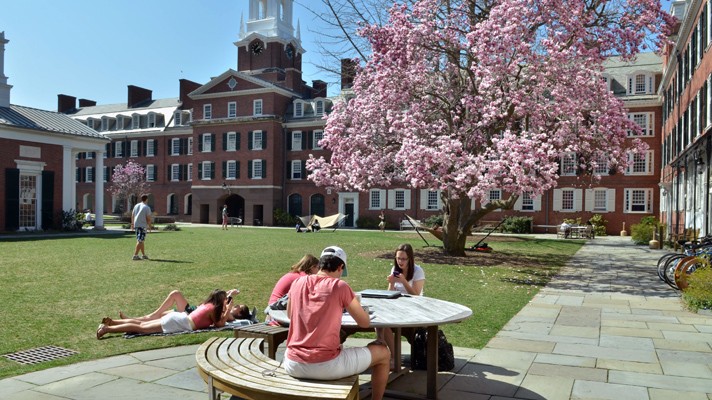
If you are a client with whom we have not had a winter/spring review as of yet, call us today to arrange a good time for your update review. If you are just beginning the process of preparing a realistic college list and would like some suggestions. Call us for a get acquainted, no obligation consultation; plan on 75 minutes for that conversation. It does not matter where you live. We are presently working with students in Shanghai, China and Stuttgart, Germany.
Generations 0
 Fifteen years ago two professors at Beloit College in Wisconsin published a list of observations they determined to be characteristic of the entering freshman that would be graduating in 2002. It went viral soon after that and became a greatly anticipated annual event in certain academic circles. It is funny, it is eye-opening and it is scary!
Fifteen years ago two professors at Beloit College in Wisconsin published a list of observations they determined to be characteristic of the entering freshman that would be graduating in 2002. It went viral soon after that and became a greatly anticipated annual event in certain academic circles. It is funny, it is eye-opening and it is scary!
For instance, if you were born post 1995, having a chat seldom involved talking. Java has never been just a cup of coffee; the US has always imposed economic sanctions against Iran; you never attended a concert in a smoke filled arena and rights of passage had more to do with when you got your own cell phone or Skype account than getting a drivers license or car.
The list that will characterize the high school Class of 2014 (that will graduate college in 2018) has not been released yet, but if it will be as terrifying as last years. YIKES!
What an interesting sociological study of the ever changing generational changes.
As a student of a certain era, I look back and reminisce from time to time. It is fun to do that isn’t it? I know that social scientists have put labels on various populations since the twenties.
In what year were you born? How well do you fit within that period of that time?
- 1928 to 1945 ~ The Silent Generation (Some might say the greatest.)
- 1946 to 1964 ~ The Baby Boom Generation
- 1965 to 1980 ~ Generation X
- 1981 to 2002 ~ The Millennial Generation
Now, it may be easy to place yourself into one of those chronologically but if you want to know how you truly fit in a particular generation, I suggest you take the 14 question POP quiz below. 🙂
I took it and found it uncannily accurate. Find out for yourself here.
Presently, all of our students are part of the Millennial Generation and most (but not all) of their parents are Generation X. Holy coffin nails Batman! None of them were alive when JFK was killed. Do they even know what JFK was planning on doing as President? How much have they learned about history in AP History? I hope more than I think based on the annual survey below.
Are you ready for this? Of course you are. Let me know what you think you could add to the list.
Crossing the Gap ~ Preparing for the Transition 0
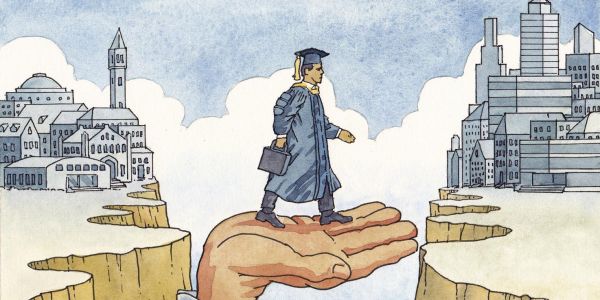 In the post WW II era of the early 50’s there were approximately 3 million college students; now there are 20 million. A college degree which used to be seen as a luxury, something which would, in a lifetime, enrich and enlighten….is now seen as a ticket to a bigger paycheck. Colleges, supported by the College Board and politicians in the District of Columbia, continue to say that a Bachelor degree is worth over 1.3 million dollars more in earnings than a high school diploma. Look at the report published by Georgetown University’s Center on Education and the Work Force.
In the post WW II era of the early 50’s there were approximately 3 million college students; now there are 20 million. A college degree which used to be seen as a luxury, something which would, in a lifetime, enrich and enlighten….is now seen as a ticket to a bigger paycheck. Colleges, supported by the College Board and politicians in the District of Columbia, continue to say that a Bachelor degree is worth over 1.3 million dollars more in earnings than a high school diploma. Look at the report published by Georgetown University’s Center on Education and the Work Force.
 But now we hear that the undergraduate degree is not enough and that an increasing number of graduates are unemployed or underemployed. If that is true, why is it true?
But now we hear that the undergraduate degree is not enough and that an increasing number of graduates are unemployed or underemployed. If that is true, why is it true?
- Are employers raising the proverbial bar for advancement or even entry level jobs within the organization?
- Is it because colleges are graduating students with little more knowledge or critical thinking skills than they had in high school ?
- Or is it because college graduates are not prepared to enter the work force because they have had little or no substantive work experience while they were college students?
Many would blame the “economy”. Yes, we hear a lot in the news about jobs being scarce because of the great recession. But we are not told why. I suggest it is because our Keynesian economic system, based on fiat currency and debt, has been subtlety used to manipulate trends of booms and busts in the economy since 1913 and was accelerated in 1971 when the dollar was taken off the gold standard. Currently, there is statistical evidence that the graduating college and high school class of 2013 continue to face dim job prospects. It is one of the symptoms of the excess borrowing and inflationary spending.
Despite that reality check, there is good news for the undergraduates here. 🙂
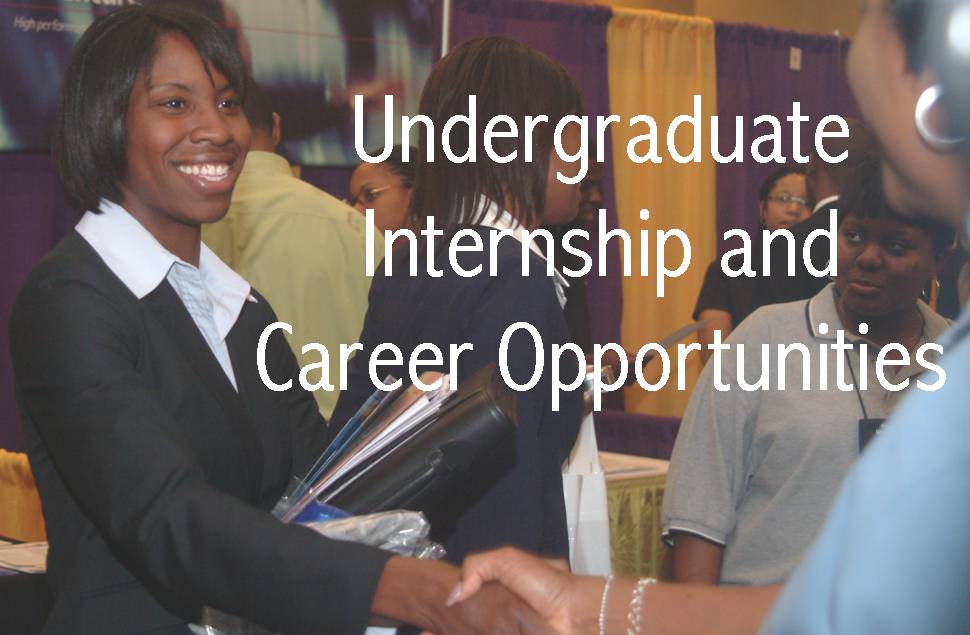 Newly minted college graduates (and parents) have made significant down payments on their futures in terms of both time and money, and they typically have a considerable burden of debt right out of the gate. If that graduate did not investigate the career services department beginning in the freshman year (preferably when they were still in high school) he or she may have missed getting the internship or co-op experience needed to optimize employment prospects.
Newly minted college graduates (and parents) have made significant down payments on their futures in terms of both time and money, and they typically have a considerable burden of debt right out of the gate. If that graduate did not investigate the career services department beginning in the freshman year (preferably when they were still in high school) he or she may have missed getting the internship or co-op experience needed to optimize employment prospects.
If you are an undergraduate now or thinking about going to college, look around your community. Is there something you see that is being done (legally) 🙂 by someone that not only looks interesting but enjoyable and …dare I say fun? Though you may not be able to tell at first, are they earning an income that supports their life style?
Take an honest assessment of your natural strengths and innate characteristics. (If you have done that work with me already, return to the computer where you have made it a favorite.) Research that work that looks like fun and learn what it will take to do it. By the way, did you know that the best definition of workis NOT in the dictionary? Here it is.
Work (wurk) n. ˜something you do when you would rather be doing something else”
Is that a Utopian ideal? Not necessarily.
If you are a whiz in math or science that does not mean you should be an engineer, mathematician or doctor. Your peers, relatives and teachers may say so, and they may be right. But I don’t have enough fingers and toes to count the number of adults I know who are now self-employed with time freedom to spend doing things they never dreamed they could do and spend time with their families all while writing their own paycheck. The work they are doing may even be unrelated to what their college major was. Learn from the learning curve of adults and college students like these who have walked the path ahead of you and changed their destinies by focusing on doing, not wishing.
If you cannot find your dream job why not create one! As a matter of fact, forget about a job for a moment. After all, did you know that JOB is an acronym for Just Over Broke. Jim Rohn, the late great business philosopher and mentor for millions of successful entrepreneurs said, “Formal education can help make you a living, but self-education will make you a fortune.”
He was a master with words and ‘walked the talk’ by doing. We ALL have the ability to change, but as Jim Rohn said in another memorable quote, “If you really want to do something, you will find a way; if you don’t you will find an excuse. If you would like some help or simply assurance that you are on the right track, give us a call. No more excuses. 🙂
Eric Goodhart ~ (978) 820-1295
Early College Decisions 0
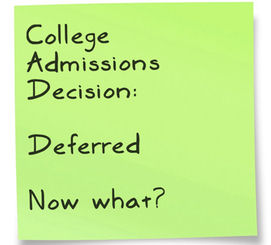 At the end of December, many students who applied to college Early Decision or Early Action are finding that they’ve been neither accepted nor rejected, but deferred. If you find yourself in this limbo, here are some guidelines for how to proceed.
At the end of December, many students who applied to college Early Decision or Early Action are finding that they’ve been neither accepted nor rejected, but deferred. If you find yourself in this limbo, here are some guidelines for how to proceed.
1. Don’t Panic ~ Most likely, if you’ve been deferred your credentials are in the ballpark for getting accepted. If they weren’t, you’d be rejected. However, your application wasn’t so far above average that the college wanted to give up a spot in the entering class until they could compare you to the full applicant pool. The percentages vary from college to college, but many students do get accepted after being deferred.
2. Find Out Why You Were Deferred ~ Unless the college asks you not to do so, give the admissions office a call and try to find out why you were deferred. Be polite and positive when making this call. Try to convey your enthusiasm for the college, and see if there were particular weaknesses in your application that you might be able to address. Some early applicants are deferred because they did not show enough interest in the college prior to submitting the application. Could this be you?
3. Update Your Information ~ Chances are the college will ask for your midyear grades. If you were deferred because of a marginal GPA, the college will want to see that your grades are on an upward trend. Also, think about other information that might be worth sending:
- New and improved SAT or ACT scores
- A new leadership position in a group or team
- A new honor or award
4 . Send a New Letter of Recommendation ~ Is there someone who knows you well who can really promote you effectively? If so, an additional letter of recommendation might be a good idea. However, make sure the college allows extra letters. Ideally, this letter should talk about the specific personal qualities that make you an ideal match for the particular college that has deferred you. A generic letter won’t be nearly as effective as a letter that explains why you are a good match for your first-choice college.
. Send a New Letter of Recommendation ~ Is there someone who knows you well who can really promote you effectively? If so, an additional letter of recommendation might be a good idea. However, make sure the college allows extra letters. Ideally, this letter should talk about the specific personal qualities that make you an ideal match for the particular college that has deferred you. A generic letter won’t be nearly as effective as a letter that explains why you are a good match for your first-choice college.
5. Send Supplemental Materials ~ Many applications, including the Common Application, provide the opportunity for sending in supplemental materials. You don’t want to overwhelm the admissions office, but you should feel free to send in writing or other materials that will show the full breadth of what you can contribute to the campus community.
6. Be Polite ~ As you try to get out of deferral limbo, you’re likely to correspond with the admissions office several times. Try to keep your frustration, disappointment and anger in check. Be polite. Be positive. Admissions officers are remarkably busy this time of year, and their time is limited. Thank them for any time they give you. Also, make sure your correspondence doesn’t become pesky or harassing.
7. Have a Back-Up ~ While many deferred students do get accepted during regular admissions, many do not. You should do all you can to get into your top choice school, but you should also be realistic. Make sure you have applied to a range of reach, match and safety colleges so that you will have other options should you get a rejection letter from your first choice.
If you have been deferred but have new information to present to the college, you’ll want to write a letter presenting the updates.
Application Strategies 0
The majority of college bound students do it the wrong way; is your student in the majority? Fall is college application time for seniors. The Class of 2013 was the largest most competitive high school class in American history. High school seniors around the country are applying to their Dream Schools.
Every year the following scenarios are played out by countless ambitious students everywhere.
SCENARIO ONE: The first is when a student falls in love with a single college but his academic profile is in the lower 50% of the applicant pool. It could be a college that historically has less than a 10% acceptance rate or as high as 40%. He applies in one of the early application programs (ED or EA) thinking he will have a better chance of admittance. It is his “dream school” and, while he may grudgingly add a few more colleges to a list to satisfy a nervous parent, he never really looks beyond that “dream school”. Until, of course, the rejection letter arrives in December. Because his focus and enthusiasm was wrapped up in his dream school, he did not pay much attention to the requirements of his other colleges. Some of which had January regular application (RA) deadlines, none of which he is prepared to meet.
SCENARIO TWO: This is more common. As above, the student may have what I call brand name paralysis and builds a list solely of “BNP schools.” These are schools like Harvard, Yale, Stanford, UC Berkeley and Pomona where the acceptance rate is so ridiculously low that no matter how good your grades and test scores are, getting in is never a sure bet. Unfortunately, like the “dream school” students, they too are often disappointed. Likely they have been told by parents, teachers, or a guidance counselor that they are excellent prospects for these schools because they are so unique and special. So, they never really look seriously beyond those “lottery schools”…until, of course, the rejection letters start coming in the mail in the spring.
Because of the huge increase in student applications, some of the top students are even being rejected by their safety schools . (Colleges do not want to be thought of as safeties, so they are sending a message basically saying we want you only if you want us.) Talk about humble pie!
These two scenarios illustrate why I believe that college planning should start with an honest; realistic self-assessment. This means taking a critical look at the student’s academic statistics, interests, learning style and personality.
Obviously financial issues are important too. You can learn how to minimize student (and parent) debt here.
In other words, begin the college search by identifying several schools where the student has a good bet of acceptance and more importantly – where he/she would be happy to spend a few years. These are the schools where the student’s academic profile places him or her in the top 25% of the accepted student pool. Once students genuinely appreciate (if not love) at least one safety school, they can safely move on to more selective schools and, yes, even some of the aforementioned most competitive colleges. Ultimately applying to no less than 8 nor more than 12 colleges.
College Rankings 0
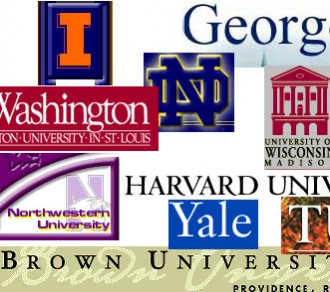 The popularity of the US News & World Report’s annual College Issue has spawned numerous copycats, each trying to offer its own spin on how it rates colleges. It’s all about selling magazines. The more they move off the newsstand, the higher the advertising rates they can charge.
The popularity of the US News & World Report’s annual College Issue has spawned numerous copycats, each trying to offer its own spin on how it rates colleges. It’s all about selling magazines. The more they move off the newsstand, the higher the advertising rates they can charge.
It’s more about the money than the value of the content. What does it really mean when you read about six year graduation rates, the average financial aid a student receives, the reported professor student ratio, and average loan burden upon graduation and SAT scores?
It is interesting, more and more colleges are either eschewing such assessments or not returning the self-reported questionnaires sent to them by the publications. But when a college is recognized as in the top 10 or Best of in a particular category they are not shy about emblazoning that recognition proudly across their website.
And yes, I am one of those that buy those magazines. I buy them because you are, and I want to be ready for your questions when you ask.
Why do you recommend the 41st ranked University of the South @ Sewanee for Carolyn instead of the well known 18th ranked Colgate University?
I appreciate such questions. More often than not, the answer has to do with a combination of factors. The academic profile of the student and learning style, how a student expresses interest in different majors (however vague they may be early on), financial parameters of the parents, campus ethos and the nature of the academic and career advising.
All of which we take into account when suggesting the starter list of fifteen colleges for a junior. I invite you to arrange a FREE get acquainted conversation with us. We work with students all over the world thanks to the Internet. Please click here for more information.
Searching for that Perfect College? 0
 The perfect college doesn’t exist. Almost any college, whether it’s an Ivy or a local community college, can be the foundation for productive and enjoyable college years. Every student’s experience has its ups and downs. Your parents may know what I mean. With colleges putting so much effort into diversification in recent years, few students fit the cookie-cutter images that proliferate in college view books.
The perfect college doesn’t exist. Almost any college, whether it’s an Ivy or a local community college, can be the foundation for productive and enjoyable college years. Every student’s experience has its ups and downs. Your parents may know what I mean. With colleges putting so much effort into diversification in recent years, few students fit the cookie-cutter images that proliferate in college view books.
Like with most things in life, college is what you make of it. If you are determined to study hard and find your social niche, you will probably be happy no matter what school you attend. However, that does not mean you can just throw darts at a map listing all colleges coast to coast. But it is always fun to put a pin on our office wall map when a student matriculates to a college he or she never knew existed until they went through the process I describe below. With hundreds of colleges to choose from, there will be some that fit better than others. But I have found that many students start the process without paying much attention to the purpose of going to college in the first place.
Fortunately, that can be easily rectified with some self-assessment by the student. In other words, you start the process with a careful look at yourself, not with a list of colleges. It is your own honest assessment of your academic profile, interests, learning style, and natural strengths that is central to finding a good fit college.
Most students start their lists, not only by listing well-known schools but the most competitive first. It is a faulty strategy. Before you start poring over view books and catalogs from colleges, you want to examine yourself as a person and as a student. Such an appraisal will yield data about yourself that will allow you to move forward with confidence.

So, once that is all done you can consider other things, like location, total enrollment, male to female ratio, and athletics. Do you want a college within easy driving distance to home or across the country? Many students feel both callings at one time and another. Going to a college in the same state can still provide the independence and freedom students crave if they don’t commute. If you do not plan to be going home often, however, beware of the suitcase school, where the majority of students are locals who split the campus on the weekends.
The current health care concerns based on a “novel” strain of the common Coronavirus called Covid 19 has many people concerned about how far away from home to go college. However, if you are willing to go over 300 miles from home, your pool of prospective schools will grow significantly, not to mention chances of admission may be enhanced as well. That is, if you show some genuine measure of demonstrated interest.
By the way, do NOT dismiss a college without doing your AAA due diligence simply because it has fewer students than your high school. In college, you will likely have peers from all over the country and many countries, unlike your little community of students whom you have known most of your life. It is a big world and your journey has just begun. No better place to do it than within a community where you can learn from both professors as well as fellow undergrads that come from different parts of the globe. Each of you can share ideas and experiences that will be mutually beneficial.
What is College For? 0
 As we enter the second semester of the academic year, millions of high school students are anxiously awaiting college acceptance letters. Some have heard already from those colleges. The students who applied in a college’s ED, EA or rolling admissions program. But the most competitive colleges will not make their final decisions until late March for the RA pool of applications.
As we enter the second semester of the academic year, millions of high school students are anxiously awaiting college acceptance letters. Some have heard already from those colleges. The students who applied in a college’s ED, EA or rolling admissions program. But the most competitive colleges will not make their final decisions until late March for the RA pool of applications.
Other than those students who were accepted in December in an ED program, all other students will have until May 1 to make their final decisions. Before that deadline it is the colleges that will be nervous. That is, who will say Yes, I am accepting your acceptance back to them! In the college ratings game made popular by US News & Reports, the higher the yield the higher the ranking.
Yes, it is an exciting time. But let’s step back a minute and consider this. What is college for anyway? Is it REALLY worth the expense? Colleges will tell you it is an investment. But in financial jargon an investment is made in anticipation of an outcome greater than the time or money put into it. Is that what the outcome is in the majority of cases?
In May of 2011, the Pew Research Center released surveys that indicate that 57% of Americans feel that universities in the US fail to provide good value for the money spent. College has always been expensive but in the last 21 years I have seen an escalation of costs that are way out of proportion with income, with one significant exception. Parents view college price tags with a wary eye, as they should. According to the survey only 35% of the American adult public said colleges were doing a good job in terms of providing value to students; 42% said only fair and 15% said poor. In the same survey, however, 84% of recent college graduates said college had been a good investment; only 7% said it had not been.
Why the disparity in belief? Is that because young people don’t want to admit the four years plus they spent in college was money (more often a parent’s money) not well spent? What I sense some of them saying is that the benefits they received are intangible, immeasurable and not connected to what a particular degree got them.
Hopefully, as teenagers mature through their twenties they develop a fair amount of critical thinking and social networking skills. They will benefit greatly from learning as much, if not more, outside the classroom as in it. That is why I put a great deal of emphasis on understanding the nature and depth of academic and career advising at each college they are considering. The student who is pro-active in pursuing internships as an undergraduate often has an advantage amongst his peers following graduation.
Call us at Programs for Education for a complimentary get acquainted conversation. Learn how you and your children can get the best return on investment from their college experience.
He Got into Harvard? 0
 I want to tell you a story about a current undergrad at Harvard College. He was not a top scholar, or an outstanding athlete in high school. How did he become one of the selected 7%?
I want to tell you a story about a current undergrad at Harvard College. He was not a top scholar, or an outstanding athlete in high school. How did he become one of the selected 7%?
At a competitive high school he was a good student, but not a stellar one. His SATs were lower than Harvard’s 2300 average and his transcript was replete with an equal amount of Bs and As. His transcript, however, showed he took the most challenging AP courses offered by his high school. He did not have a strong extracurricular resume nor was he a legacy applicant. The highest position he held was that of secretary at his school’s public service organization. Just a normal white Anglo-Saxon Protestant, don’t you think?
He was not optimistic about his chances of admission to such a competitive college. He did realize, however, that his chances would be enhanced if he worked really hard on his essays and got excellent teacher evaluations. A standout quality that he did have was that he always worked to the best of his ability. He said, I also spent a lot of time on my essay and must have written and rewritten it a dozen or more times.
When he received his acceptance letter from Harvard his friends were amazed! He was amazed! How did he do it? These are his words: It was pretty obvious that it was not my grades, scores, or activities that got me in. I think I owe it mostly to my essays and teacher evaluations.
Seniors know why we emphasize the importance of getting started on the personal statement early. Plus, it is important to follow a particular method for handling evaluations from teachers. Please remember this if you are not yet a senior.
In addition, after one year at Harvard, his grades are better than those of his fellow students, who had stronger grades in high school. The Admissions team at Harvard obviously recognized the quality of his work ethic, and strong desire to do the best he could, always.
If the reader is a high school student with aspirations of getting into one of the most competitive colleges, take note. You cannot rest on your straight-A transcript and 2300 (now 1580) SATs or 35 ACTs and consider it a done deal. At the most competitive colleges, they are not only looking for diversity in the student body and a decent academic record. They are also looking for the strength of character, work ethic, and intellectual curiosity, qualities that no doubt were brought out by teachers in this student’s recommendations.
Don’t Wait…It May Be Too Late! 0

Even for parents who say Money is no object, my child has worked hard and we will do whatever it takes to enable her to go to her top choice college if she is accepted a dry run exercise is always a smart idea. The parent cry for help below is not unusual. However, it can be avoided when someone who is familiar with the variable college financial aid practices calculates an accurate snapshot of a familys future Expected Family Contribution (EFC).
The earlier the better.
Please read this exchange carefully between a disappointed parent and a US News expert: and yes, this is an actual question.
Question:
My son has recently been accepted to his first choice college, Lehigh University. They have offered him loans and grants of approximately $32,000. The COA is $69,750 a year. My wife and I do not have available funds to make up the difference. What steps can you suggest to give my son the opportunity to attend this school? In high school he has maintained a high academic level, ranking 27/499.
Thank you for any suggestions that you can offer.
Answer:
I hope you have been successful in exploring your financing options. If you haven’t already considered it, a private (non-federal) student loan is another option. Many lenders offer non-federal student loans, in which the parent acts as the co-signer. Look for features such as a co-signer release once the student establishes a good repayment record, or reduced interest rates for automatic payments from a bank account. Ask Lehigh if they have any recommendations.
Best wishes to you.
Verna Hazen, U.S. News Expert
How much is free advice worth? In this case not much. Too little, too late is my first thought; what is yours? Why didn’t he find out that this would be his probable outcome earlier? Could he have? Yes. And could he then have been better prepared? Yes!
In the past, I have discussed the different methods colleges use to award aid. One of the most important facts I stress is that students are not treated equally even if the parent’s income and assets are identical. This is called financial aid leveraging. The free money (grants and scholarships) goes to the student they want most. You MUST know where your college bound child fits in the applicant pool of each college.
When we develop a list of colleges 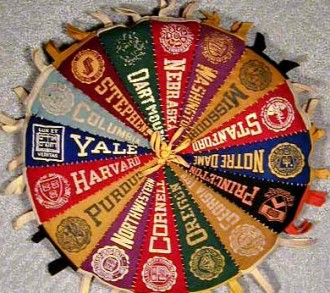 for a student based on academic and personal criteria we give the parent a preview of probable aid packages from those schools. We often provide this information one, two or even three years before the application is sent. After your child is accepted to his or her first choice college is not the time to find out what the financial expectations will be.
for a student based on academic and personal criteria we give the parent a preview of probable aid packages from those schools. We often provide this information one, two or even three years before the application is sent. After your child is accepted to his or her first choice college is not the time to find out what the financial expectations will be.
Every year we hear of students who are accepted to their top choice colleges but cannot attend because of the cost. Colleges often provide false hopes for prospective applicants because they encourage almost every student to apply, while implying that financial aid will be there for them. (The more that apply…the more they can reject thus appearing more competitive in the now infamous rankings game.)
If you would like a free copy of the 8 Questions to Ask Every FAO and/or money– saving dry run exercise call (978) 820-1295 or e-mail help@smartcollegeplanning.org today.


